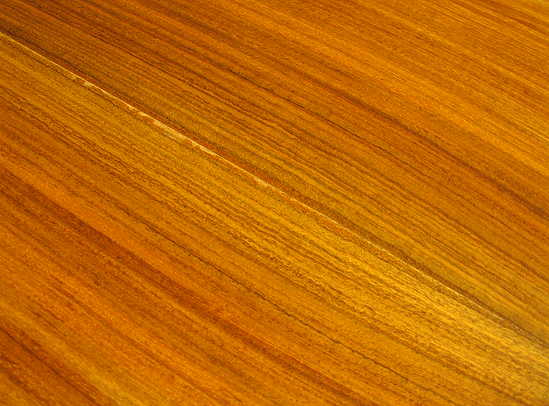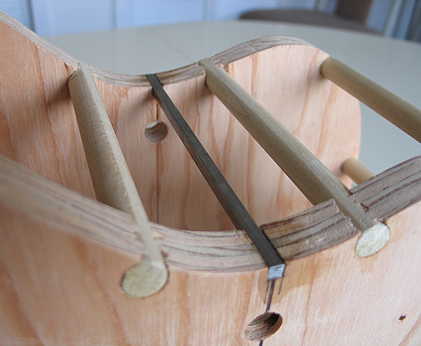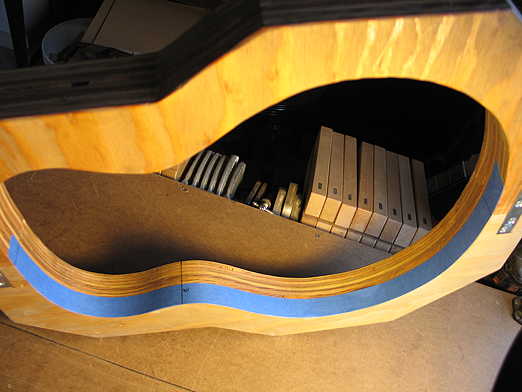Here is a closeup of what the Mayan walnut might look like with finish (I've just dampened the wood with some water). It's a nice, slightly orange/gold color.

|
|
Thursday, February 20th, 2014:
More Work on the Sides
Today it occurred to me that I should put a support bar in the bending form, to provide added support at the waist, when the waist caul is cranked down onto the form. So, I got some 3/16" square bar stock, cut it down to 6" in length, and epoxied it into two slots I had sawn, chiseled, and filed into the bending form.

|
|
Now it was time to work on tapering the sides to their proper profile.
I put a 15' radius (arch) into the back, using a radius dish when supporting the back in gluing operations. Thus, I need to engineer that radius into the side profile.
To do this, the first thing I do is to run masking tape along the back side of the mold, aligning the tape edge to the mold's edge, from the neck centerline to the tail centerline.

|